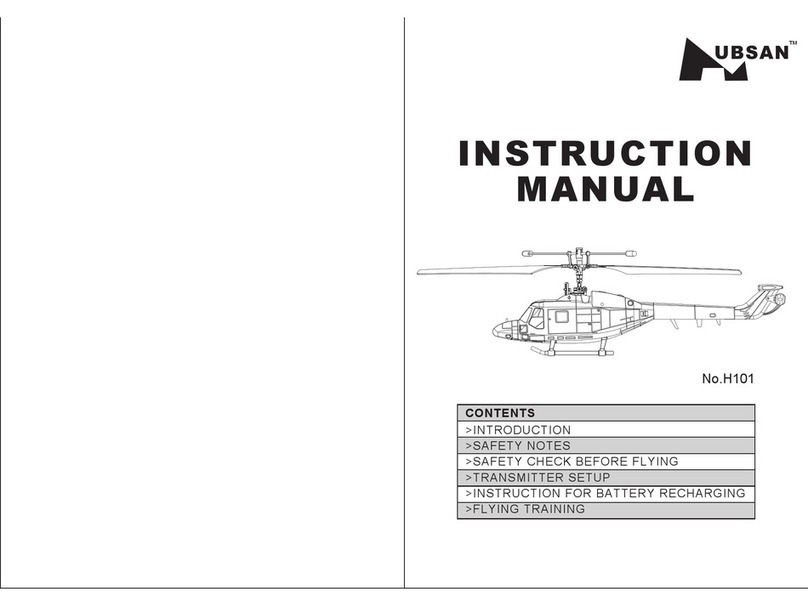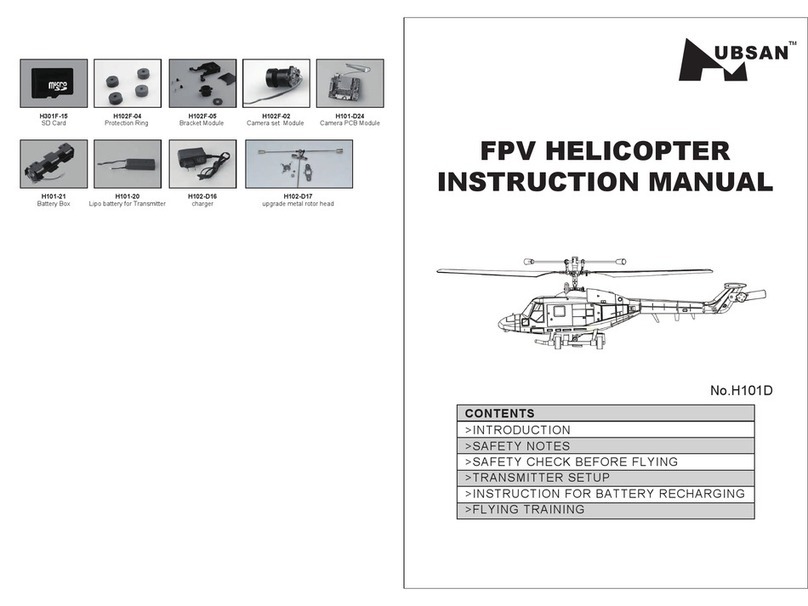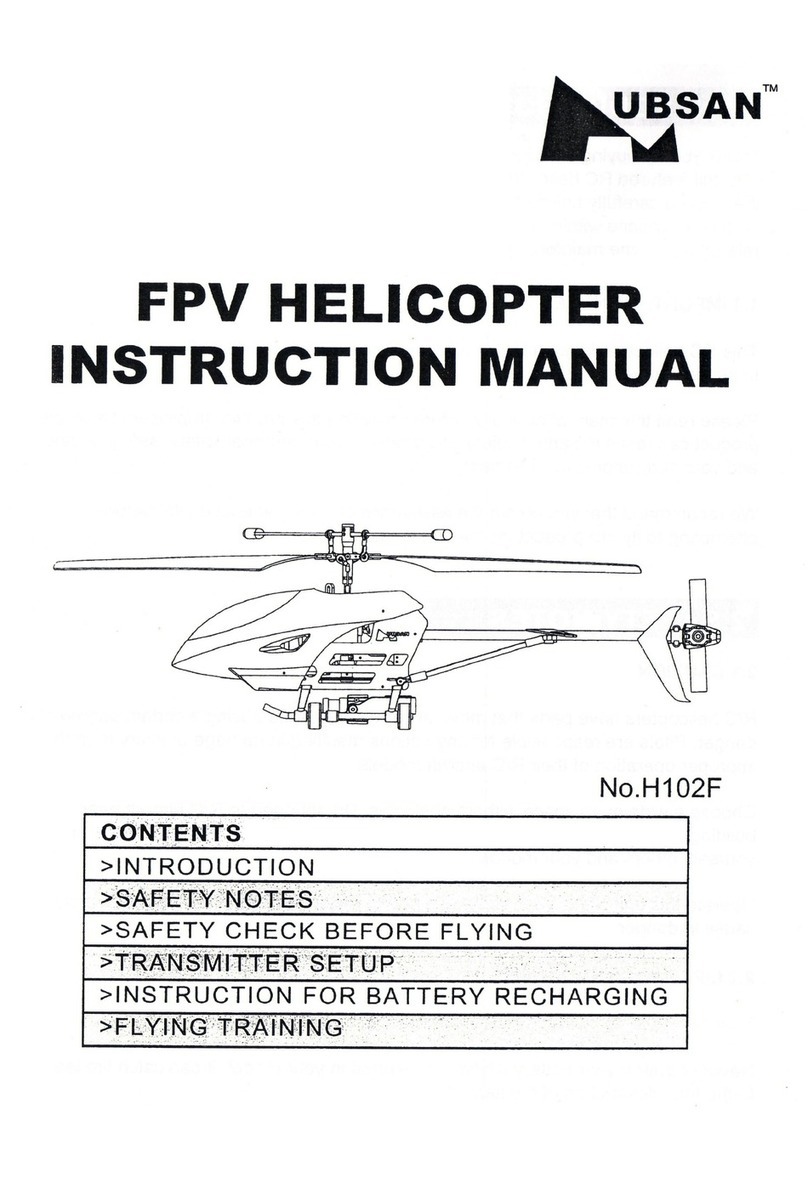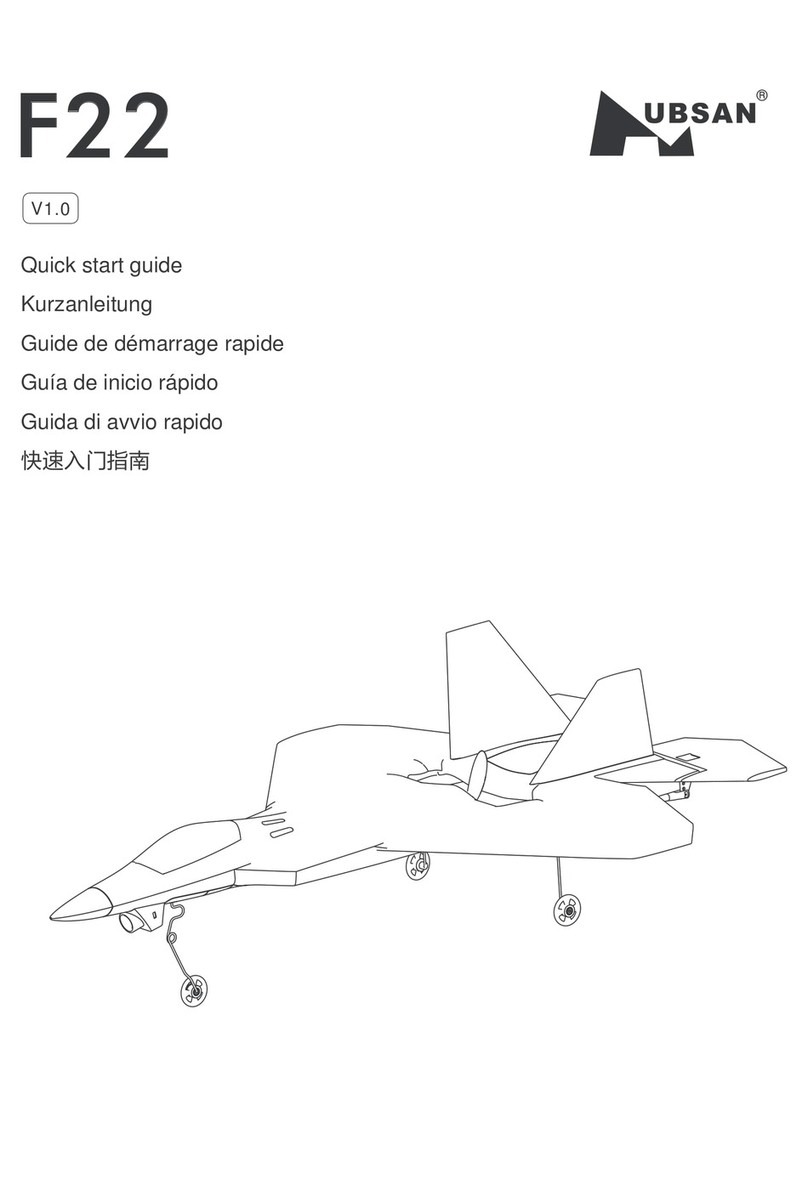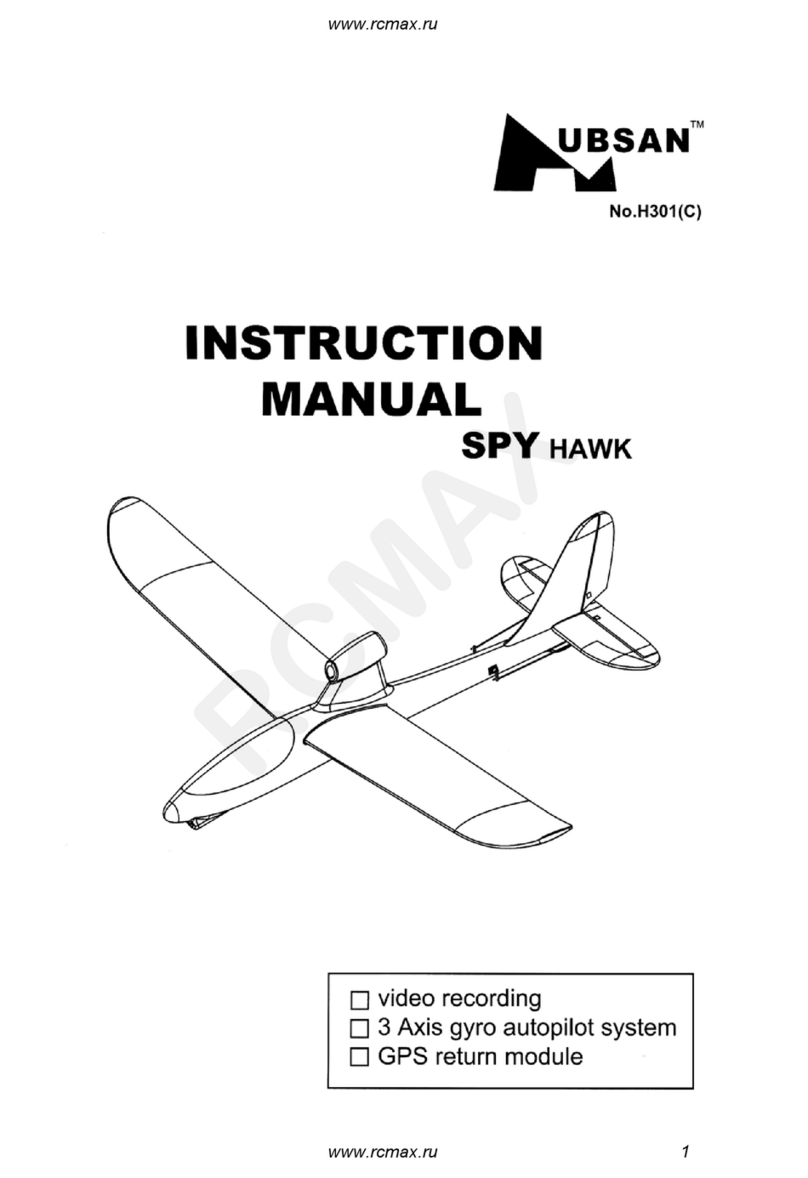2
Charge and store LiPo batteries in a location where a battery fire or
explosion (including smoke hazard) will not endanger life or property
Keep LiPo batteries away from children and animals
Consider how you would deal with a LiPo battery fire/explosion as part of your
normal home Fire Safety & Evacuation Planning
Never charge a LiPo pack that has ballooned or swelled due to
over-/under-charging or from a crash
Never charge a LiPo battery pack that has been punctured or damaged in a
crash (After a crash, inspect the battery pack for the sign of damage. Discard
in accordance with your country’s recycling laws.).
Do not charge LiPo batteries near flammable materials or liquids
Ensure that charging leads are connected correctly. Reverse polarity charging
can lead to battery damage or a fire or explosion
Never charge a LiPo battery in a moving vehicle
Only charge your LiPo battery using the supplied “balanced” charger
Have a suitable(electrical type) fire extinguisher near the charging area OR a
large bucket of dry sand. Do not try to extinguish electrical (LiPo) battery fires
with water
Reduce risks from fire/explosion by storing and charging LiPo batteries inside
a suitable container: a LiPo Sack or metal/ceramic container is advised
Monitor recharging LiPo batteries for signs of overheating
Never over charge a LiPo battery
Never leave a LiPo battery unattended during recharging
Protect your LiPo battery from accidental damage during storage and
transportation. (Do not put battery packs in pockets or bags where they can
short circuit or can come into contact with sharp or metallic objects.)
If your LiPo battery is subjected to a shock (such as a helicopter crash) you
should place it in a metal container and observe for signs of swelling or
heating for at least 30 minutes
Do not attempt to disassemble or modify or repair a LiPo battery
LiPo batteries differ from conventional batteries in that their chemical contents are
encased in a relatively insubstantial foil packaging. This has the advantage of
significantly reducing their weight, but does make them more susceptible to
damage if roughly or inappropriately handled. As with all batteries, there is a risk
of fire or explosion if safety practices are ignored:
13
4. Notice that the cyclic joystick is spring-loaded, you must maintain a forwards pressure on the
cyclic joystick otherwise it will return to its neutral position and your helicopter will stop moving.
Tip-if you become confused, releasing your helicopter's controls will bring it to stop. it will not
lose height as the throttle is on a ratchet.
5. Stop you helicopter, turn it around (use rudder), and bring it back.
6. Choose a landing site. Fly your helicopter to a position that is precisely over your chosen
landing site and set your helicopter down in a smooth and precise landing.
7. Repeat this flying lesson until you become S-M-O-O-T-H-L-Y proficient and precise.
3.5 Advanced Maneuvering
In this flying lesson you will combine cyclic joystick Pitch and Roll inputs with collective Rudder
and Throttle inputs to give more precise control to your helicopter maneuvers.
You've probably already tried combining Rudder and forward Pitch inputs. This combination
allows you to turn your helicopter, but it won’t look right. The helicopter will remain upright. It's
like watching a bicycle that's not leaning into the turn, because air has very little grip, your
helicopter will actually skid through its turn.
The solution is to make the helicopter lean-"Roll"-so that rotors help to counteract the tendency
to skid (or 'side slip').To do this, you must learn to synchronise your use of mixed Pitch and Roll
on the cyclic joystick, with mixed Rudder and Throttle on the collective joystick
1. Begin a hover at shoulder height.
2. Push the cyclic stick Forwards to gather sufficient airspeed.
3. Begin your turn by pushing the cyclic joystick to the right (setting up the Roll) while
maintaining forward pressure.
4. As your model begins to respond to the Roll, push the collective Rudder joystick to the right
to initiate the turn.
5. Don't forget to be ready to catch the helicopter's loss of lift. As you servos are creating a
battery power drain, you will need to increase the collective Throttle while maintaining the
Rudder input Exiting the Turn maneuver
6. At the end of the turn, begin to SUMULTANEOUSLY ease off the cyclic Roll, collective
Rudder and the additional Throttle inputs. You should practice until you can simultaneously
use all of the joystick inputs in smooth, synchronized
movements. This will take a lot of practice!

